Pendo for Digital Adoption: Features, Pricing, and Review
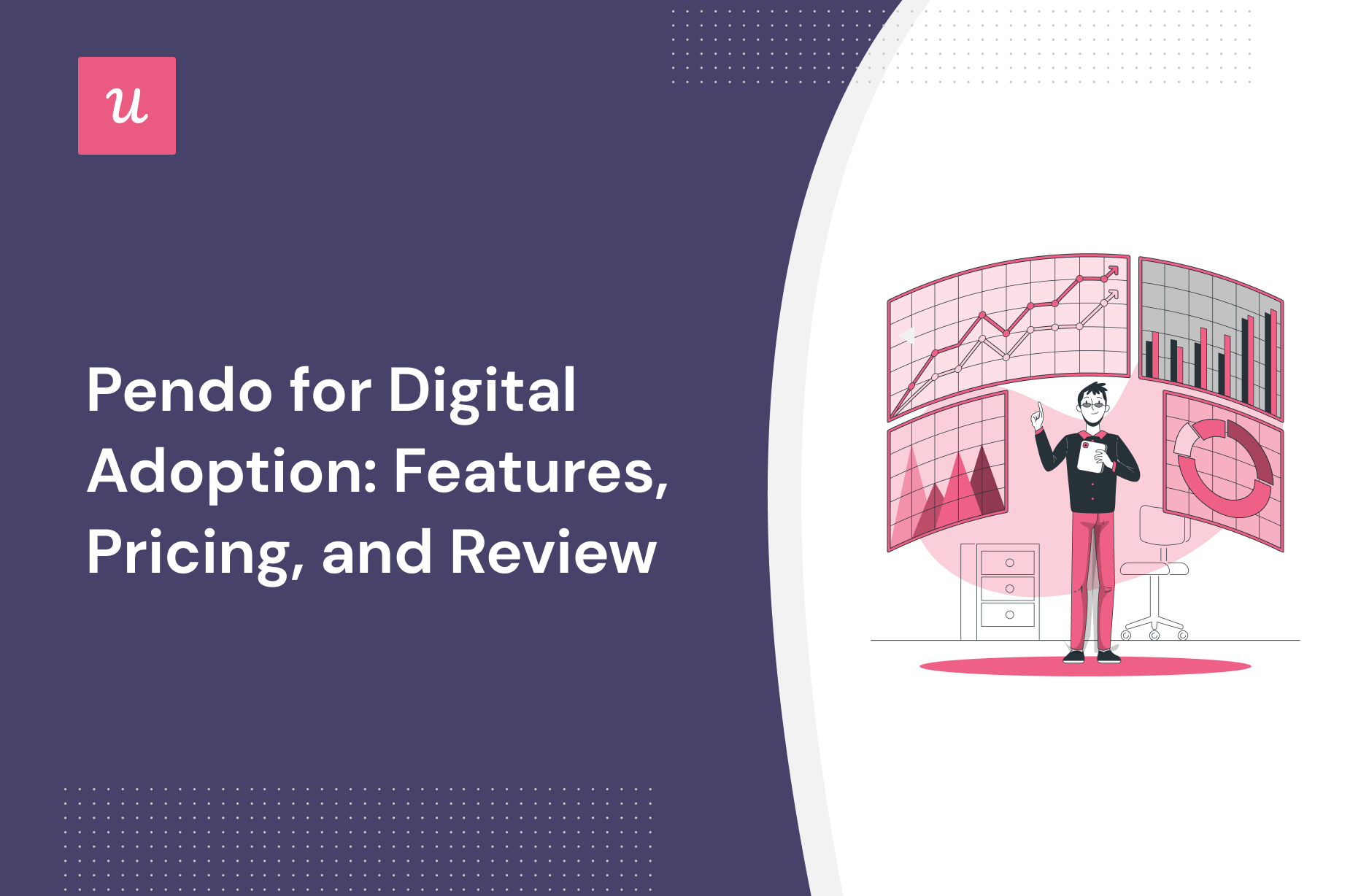
Looking for an effective Digital adoption tool and wondering if Pendo is the best option for your SaaS company?
With numerous Pendo alternatives, it can be challenging to make a final decision.
In this article, we’ll delve into precisely that – helping you determine whether Pendo is the ideal choice for your Digital adoption needs. We’ll explore its features, pricing, and offer a comprehensive review to aid in your decision-making process.
Let’s get started!
TL;DR
- Pendo is a good choice for Digital adoption and it comes with features such as tooltips, feature tags, interactive walkthroughs, and in-app announcements.
- There are a few obvious instances where you’ll likely need an alternative solution to Pendo — such as these use cases:
- Over 500 MAUs: If your product has more than 500 MAUs then you’ll need to subscribe to a premium Pendo plan (which tends to be significantly more expensive than other competitors on the market).
- Real-Time Analytics Needs: Companies that operate in fast-paced work sprints will likely opt for product adoption solutions with real-time analytics since Pendo’s one-hour data lag can data-driven decision-making difficult.
- Expensive Pricing Model: Pendo is more expensive than most solutions on the market and the subscription cost rises rapidly as your MAUs grow. Even if you’re on the Starter plan, you could be paying $35,000 annually once you reach 10,000 MAUs — which makes it harder to scale.
- If you’re looking for a better option for Digital adoption, Userpilot exceeds both functionality and value for money compared to Pendo. Ready to see Userpilot in action? Schedule a demo today to explore its powerful Digital adoption capabilities firsthand.
![]()
Looking for a Better Alternative for Digital Adoption? Try Userpilot

What is Pendo?
Pendo is a product adoption platform that lets teams monitor product usage, analyze user behavior, and publish in-app guides. The no-code solution focuses on increasing user engagement and driving feature discovery.
Additionally, Pendo also lets you survey users, segment customers, and see how many site visitors or MAUs your web app is getting. Certain features like product areas, data explorer, product engagement score, and resource centers are locked to the Starter plan or higher.
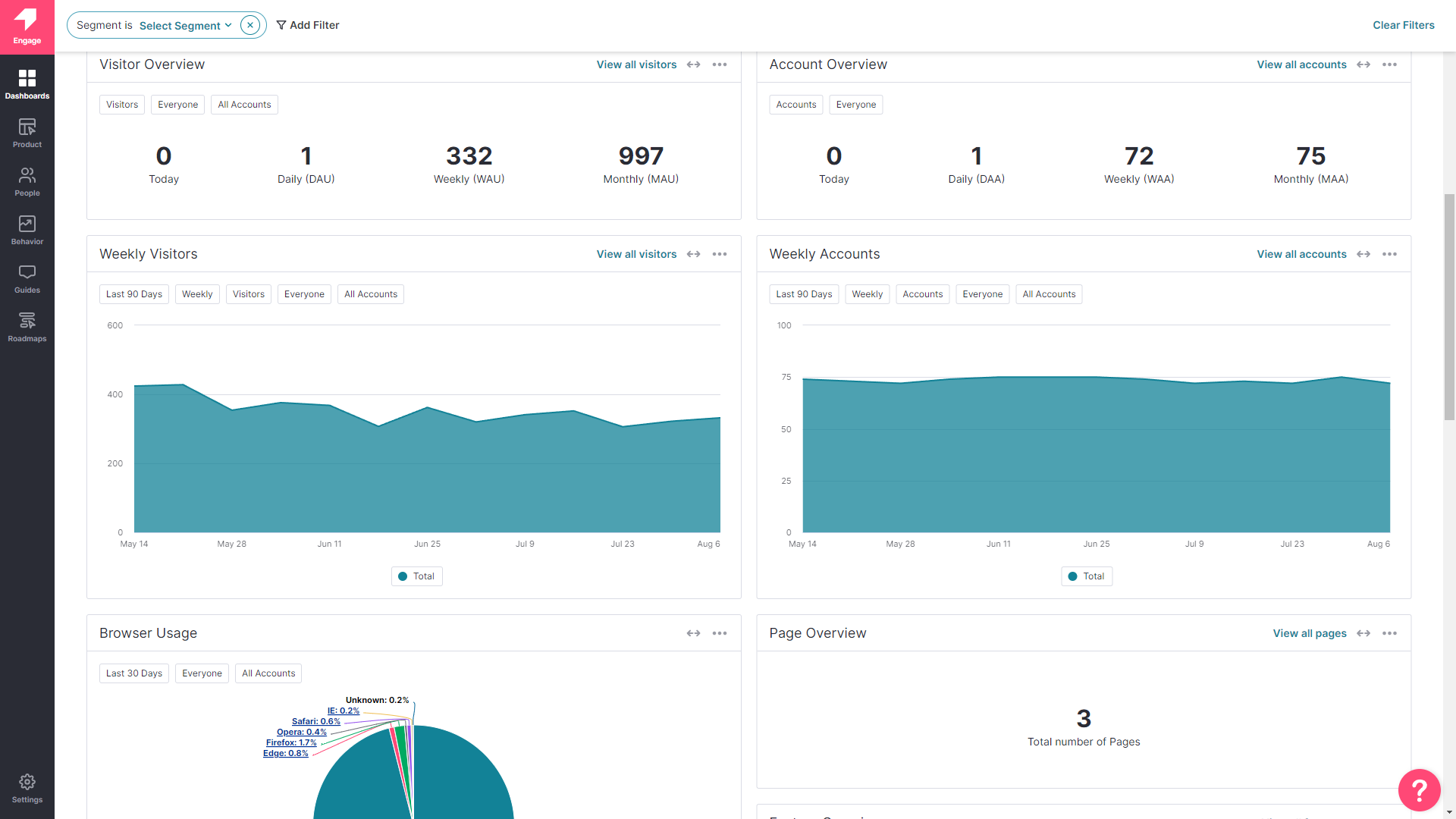
Must have features of digital adoption tools
An efficiently designed digital adoption platform guides users through complex apps with ease. Here are some features that DAPs must have:
- In-app learning: With efficient DAPs, users receive timely in-app guidance through interactive walkthroughs, product tours, and contextual UI patterns (tooltips, modals, etc.) to achieve their goals.
- User segmentation: Segmenting users by shared needs, jobs to be done, demographics, etc., helps tailor their product journey. This is crucial for keeping users adopted and retained.
- In-app self-help: Users want quick and easy support, so the DAP you select must be able to create and customize an in-app self-service widget with a knowledge base, video tutorials, etc.
- Product analytics: Analyzing product usage and user actions is crucial to assess the success of your adoption strategies.
- Microsurveys: Look for a platform that lets you design different types of surveys, trigger them contextually, and gather feedback effortlessly.
- Integrations: A DAP should integrate easily with your existing tech stack, whether cloud-based or on-premise, ensuring seamless operations and maximizing utility.
Pendo features for Digital adoption
Feature adoption is crucial to user retention as higher feature engagement makes your product stickier. Pendo’s onboarding functions help new users learn about the core offerings of your product while its analytics dashboards help you track adoption over time.
Here’s a quick overview of Pendo’s feature adoption functionality:
- In-App Guides: Using Pendo’s UI patterns like lightboxes, banners, and especially tooltips are an effective way to drive feature adoption. Creating feature discovery flows in Pendo is a pretty quick process thanks to all the layout templates available within the visual editor.
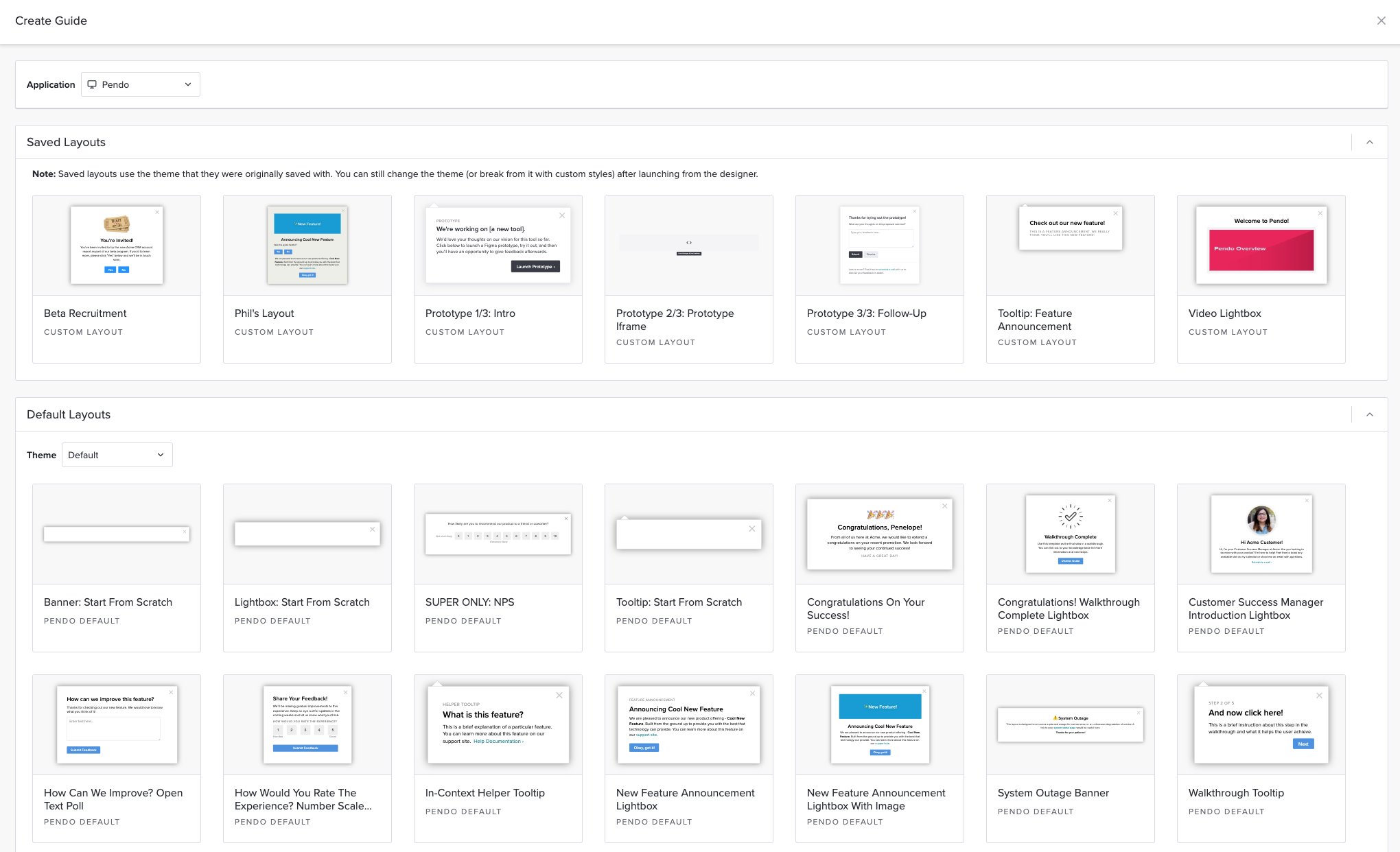
- Click Volume: The feature adoption widget shows you which features or product areas are driving the most click volume. It does this by showing you the % of clicks from each tagged feature or product area so you can see where most of the volume is coming from. Note: You’ll need to upgrade to the Starter plan ($7,000/year) to use the product areas feature.
- Feature Polling: Pendo’s polling function offers quantitative data into whether or not users like a certain feature, which features they find the most valuable, and/or which features they use most often so you can double down on these winners.
- Core Events: You can set certain tagged events, pages, or features as core events to track feature adoption. This will make it possible to highlight the first time a user lands on a page or clicks on a button within a particular feature (but you can only have up to 10 core events).
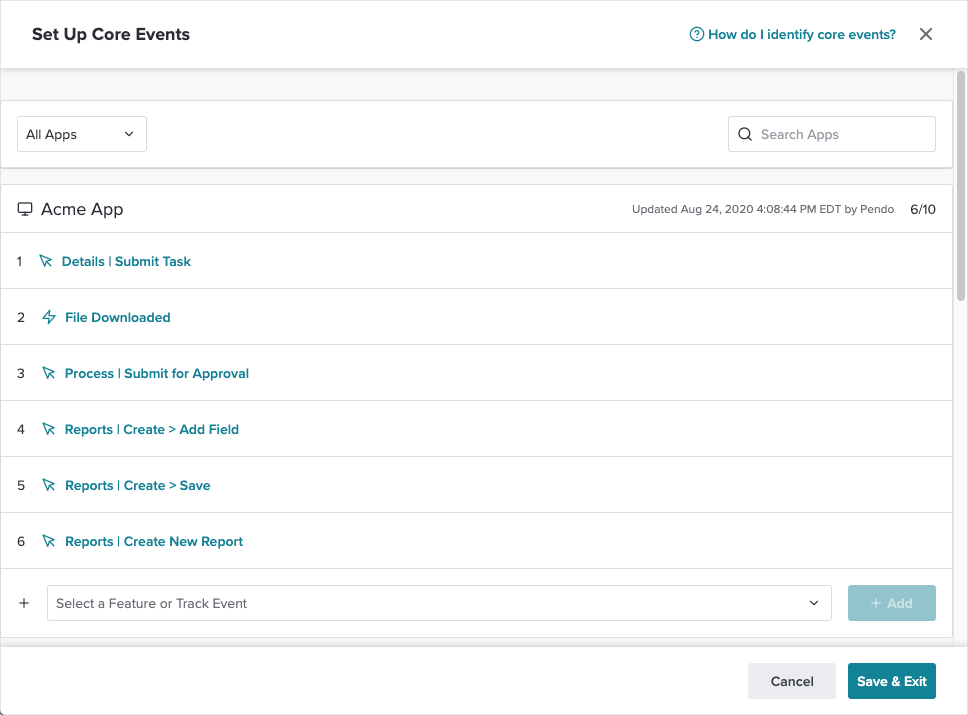
Pendo’s tooltips
Tooltips are the least intrusive form of in-app guidance as they offer additional context on a specific button/feature without taking up much screen space or impeding users from interacting with the product.

Pendo tooltips have quite a few features:
- Targeting Settings: You can set up tooltips to target specific segments, features, or locations within your product. You can also hide your tooltips behind badge icons so they’re only visible when targeted users hover over them for information.
- Mobile Tooltips: Pendo’s mobile compatibility makes it possible to add/edit tooltips for your mobile apps. You’ll be able to move tooltips from their default location, remove visual backdrops, and customize styling settings for your mobile tooltips.
- Tooltip Templates: Pendo’s layout library has templates for in-context helper tooltips, walkthrough tooltips, feature announcement tooltips, and blank tooltips that you can start editing from scratch.
Pendo’s feature tags
Feature tags monitor user activity using CSS selectors and can be used to track interactions or broader adoption rates. Pendo’s feature tagging capabilities can be used without writing code, but more advanced tasks (like adding custom attributes) will require some coding knowledge.
All users are able to tag features (regardless of their subscription tier) once they’ve installed Pendo.

Here’s a breakdown of Pendo’s feature tagging capabilities:
- Visual Tagger: Pendo’s Visual Design Studio lets you tag features without needing to code. Simply enter “Target Mode” and then use your cursor to select the element or feature you’d like to tag.
- Mobile Tagging: Mobile tagging is quite different as you’ll need to go to the Pages section, select the “Manage Page” option, and then select individual features or let Pendo tag all the features on the page.
Note: If some features are marked as ‘untaggable’, then use a code-based workaround through Pendo’s API to fix the issue (but this solution is only available to developers creating native iOS and Android apps).
- Feature-Element Matching: When selecting elements, Pendo will automatically suggest a match for which feature to tag. You can then use the up/down arrow keys on your keyboard to adjust the selection area as needed.
- Tagging Rules: Pendo supports rules like begins with, ends with, and contains. You can also add custom attributes by diving into the settings page (but, unfortunately, Pendo doesn’t automatically detect these custom attributes).
Pendo’s interactive walkthroughs
When it comes to in-app guidance using interactive walkthroughs, most flows need a combination of messaging and UI patterns to help users navigate through the process. Product tours and interactive walkthroughs are both different forms of in-app guidance with varying degrees of efficacy.
Here are Pendo’s top features for building interactive walkthroughs:
- No-Code Guides: Create in-app walkthroughs for your users without having to write a ton of code or request support from the engineering team. You’ll also be able to target guides to specific segments to maximize relevancy and build contextual onboarding flows.
- UI Patterns: Pendo’s in-app flows consist of lightboxes, banners, and tooltips. Each of these UI elements have templates in the layout gallery that you can use to build flows quicker — or select the option to start from scratch if that’s what you prefer.
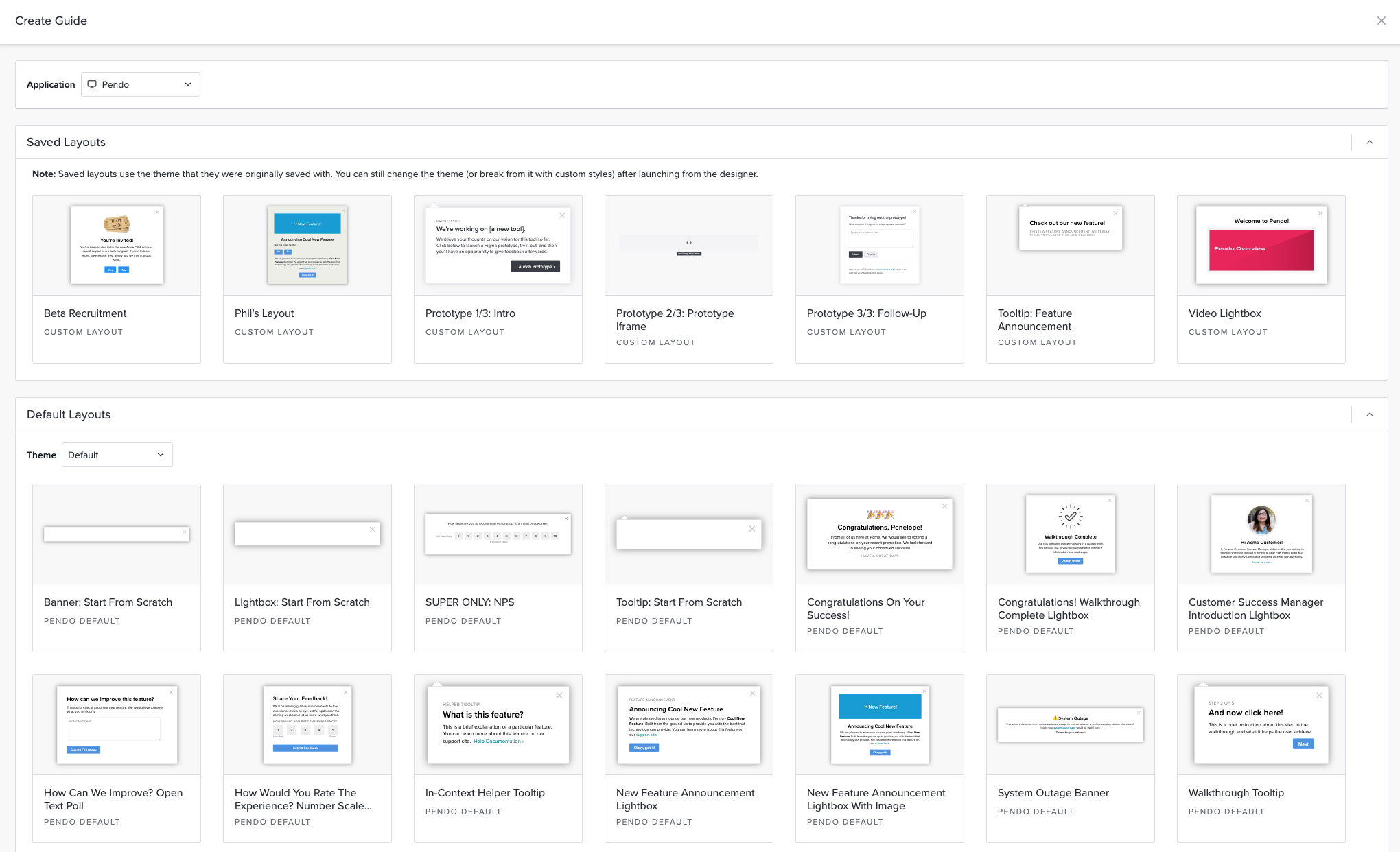
- Cross-App Consistency: Using Pendo to create in-app walkthroughs flows for your mobile and web apps ensures that the experience will feel cohesive across both platforms. Do note that you’ll need to subscribe to Pendo Portfolio if you plan to add more than one app to your account.
Note: You’ll need to upgrade to the Complete plan or higher to use Pendo resource centers.
Pendo’s in-app announcements
In-app announcements can drive feature discovery and product adoption by keeping users in the loop on all the latest developments. Pendo has multiple channels that can be used to publish in-app announcements.
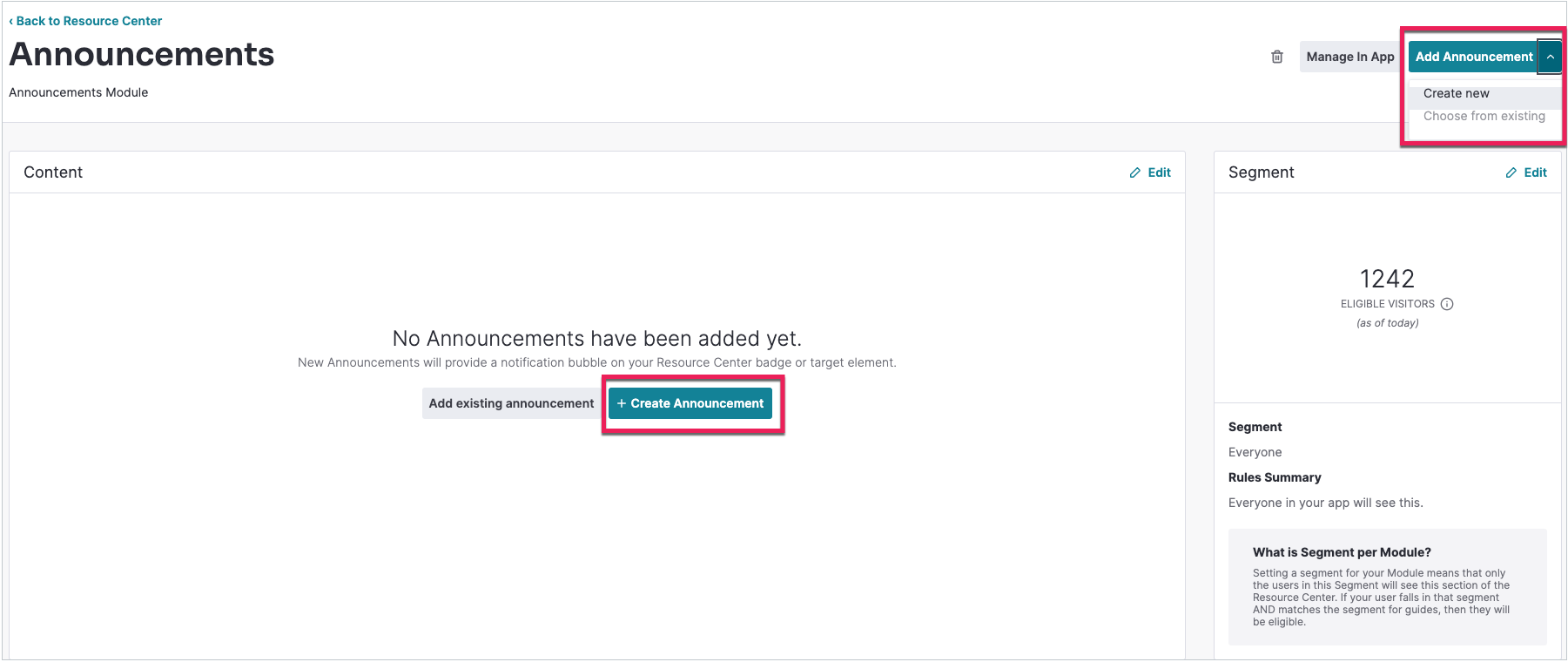
Here are a few ways to use Pendo for in-app announcements:
- Video Lightboxes: Lightboxes with announcement videos can be added to interactive user guides and product tours to introduce users to new features. These tutorial videos can also show users exactly how new features work to speed up the adoption process.
- Resource Center: Having an Announcements module in your in-app resource center will make these updates easily accessible to users without being intrusive to product usage. You’ll be able to add images/videos, set the date, and even insert custom code if needed.
- Segmentation: Pendo’s segmentation lets you target users by operating system or browser, time since the first visit, and whether they’re a visitor or account. This makes it possible to announce browser-specific updates and exclude new users for certain announcements.
What are the pros and cons of Pendo?
Pendo’s pros
Let’s take a look at some of the benefits of using Pendo:
- No-Code: Pendo lets you create surveys, in-app guides, and track metrics without needing to write your own code, which saves a lot of time (while making product experiments or split-testing a lot easier).
- Custom Themes: Pendo’s themes let you create multiple palettes and ensure that any in-app materials published align with your existing brand palette (however, you can only create/customize themes after you’ve installed the Pendo snippet).
- Flexible Dashboards: Pendo has plenty of widgets that you can add to your dashboard, including feature adoption, net promoter score, poll results, guide engagement, product stickiness, and MAUs — so you always have your most important metrics within reach.
- Integrations: Pendo has 50 different integrations to choose from including popular tools like Intercom, Jira, Okta, and HubSpot. Unfortunately, only four of these — Salesforce, Segment, Workato, and Zendesk — are two-way integrations that can share data both ways.
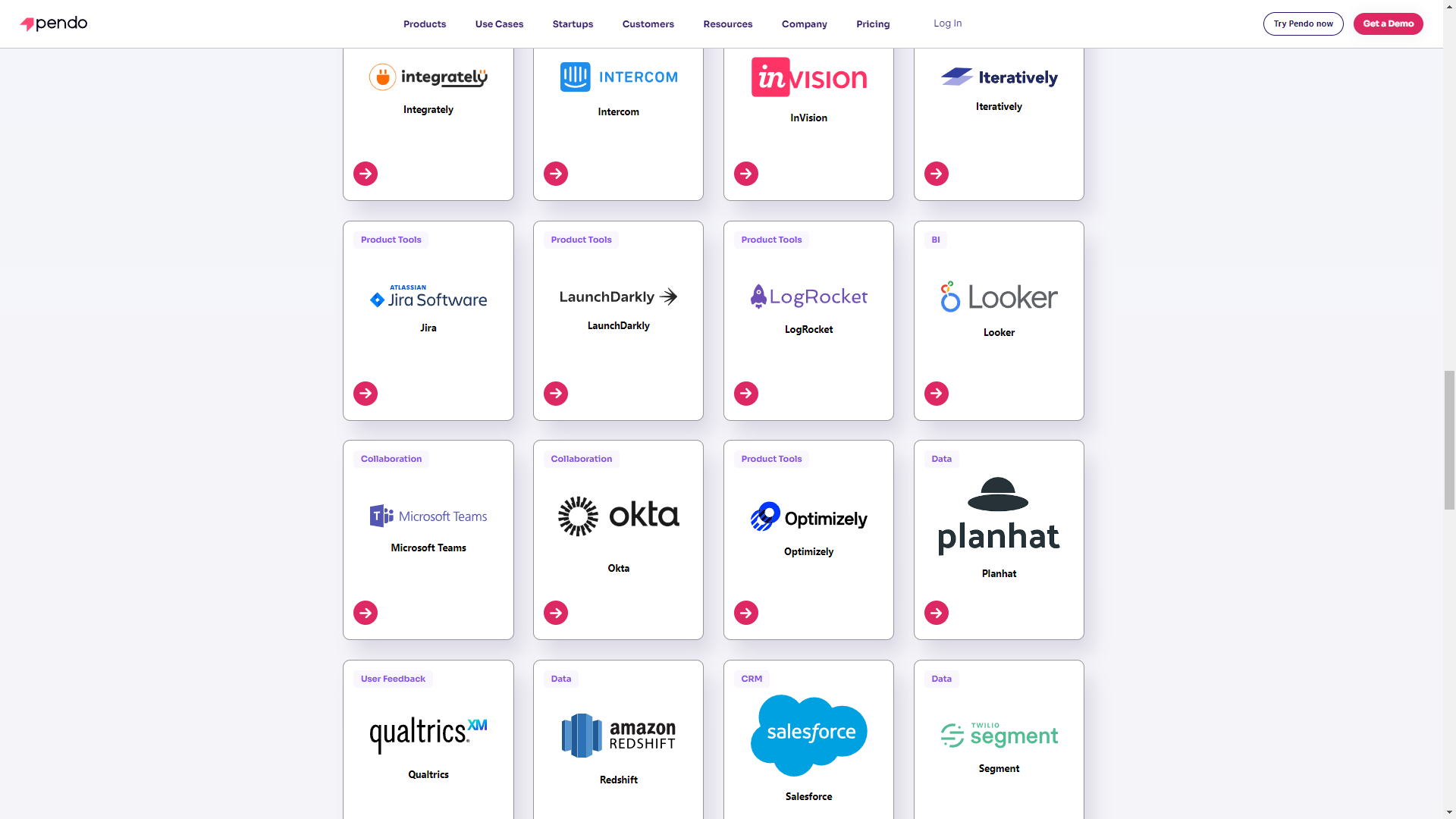
- Multi-Platform Analytics: Because Pendo is compatible with mobile applications, you’ll be able to track product analytics for both web apps and mobile apps. This gives you a more holistic view of how users (or specific segments) use your product on different platforms. Note: You’ll need to upgrade to Pendo Portfolio to add more than one product to your account.
Pendo’s cons
While Pendo certainly has quite a few benefits that make it an appealing solution, there are also a few notable drawbacks that you should be aware of before you choose the platform as your product adoption tool:
- Pricing Jumps: While Pendo does offer a free version, it has a limit of 500 MAUs. Upon reaching the MAU limit, you’ll need to upgrade to continue using most of Pendo’s features (and paid plans tend to cost thousands of dollars per month).
- Locked Features: Key features like the data explorer, resource center, and product engagement score are locked behind the Growth or Portfolio plan.
- Data Lag: Pendo’s analytics dashboards only update once per hour. In some cases, this data lag could lead product teams to make the wrong decisions or draw false conclusions from outdated insights.
What do users say about Pendo?
Most Pendo users seem to be quite happy with the solution despite a few personalization roadblocks and usability challenges:
I love the ability to see where our users are spending the bulk of their time. I love the ability to measure metrics quantitatively.
Other users were less satisfied with Pendo as a product adoption solution due to the amount of effort it takes to actually use the tool on a regular basis:
I’m giving a 1 so unfortunately I can’t give much love. It’s already my second job using Pendo and I’m not impressed. A/B testing numbers are different between the API export and CSV export in the UI, no 50/50 split between test and control, support is slow, event tracking doesn’t handle aliasing, only 7 days of historical data can be sent with Segment which make backfills impossible, NPS forms are shown in multiple tabs and doesn’t close once it’s been submitted in one of the tab.
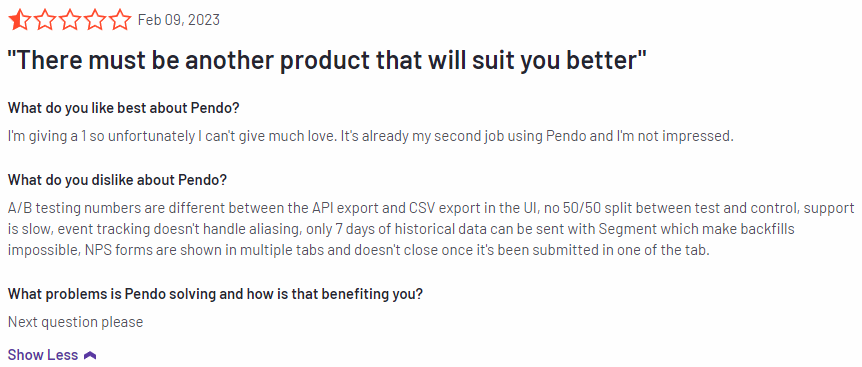
Pendo’s pricing
Pricing for most paid Pendo plans (except Starter) is only provided on a quote basis and there are no listed price ranges on the solution’s website. That said, certain reviews have stated that prices start at upwards of $20,000 per year for a single product and more than twice that for higher plans.
Pendo has three paid plans and one free version that is limited to 500 MAUs which makes it accessible to startups but difficult to scale in the long run.
Here are the differences between each Pendo plan:
- Pendo Free: The free version of Pendo can accommodate 500 MAUs and has features like native analytics dashboards, feature tagging, event tracking, segmentation, NPS surveys (with Pendo branding), analytics reports, and in-app guides.
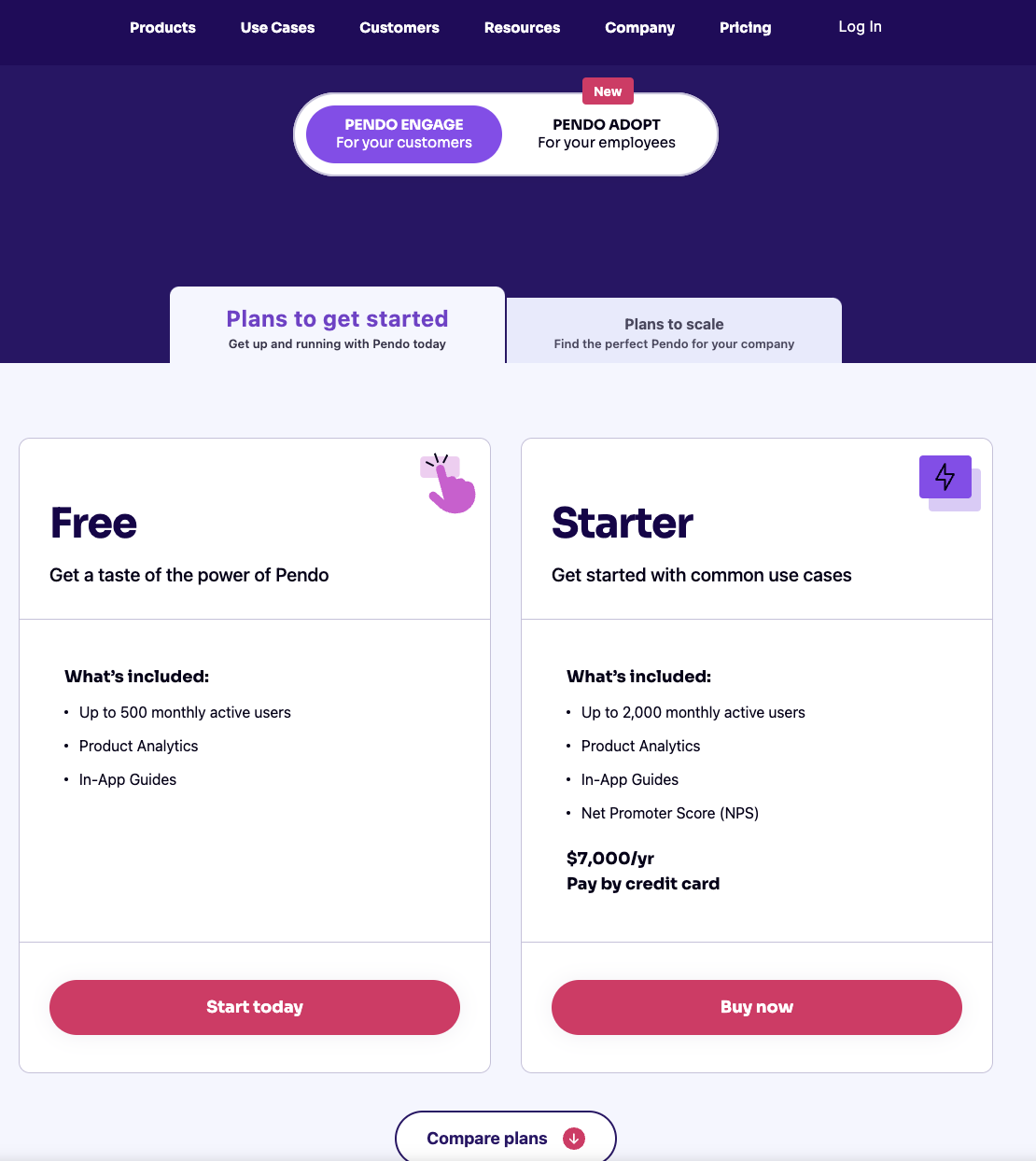
- Growth: Pendo’s Growth plan is designed to be used for a single web or mobile app but can accommodate a custom number of MAUs. It includes features like native analytics dashboards, in-app guides, NPS surveys and response tracking, and customer support.
- Starter: The Starter plan starts at $7,000 per year (or $2,000 per quarter) for 2,000 MAUs and is the cheapest upgrade option available for freemium users. Starter includes features like Product Areas, NPS surveys without Pendo branding, and (limited) NPS analytics. Note: You’ll need to upgrade to the Growth or Portfolio plan to get full NPS analytics.
- Portfolio: Pendo’s Portfolio plan is targeted towards customers who want to use the tool for multiple web and/or mobile apps. Features include guide experiment capabilities, cross-app executive dashboards, cross-app journey reporting, and access to product engagement scores.
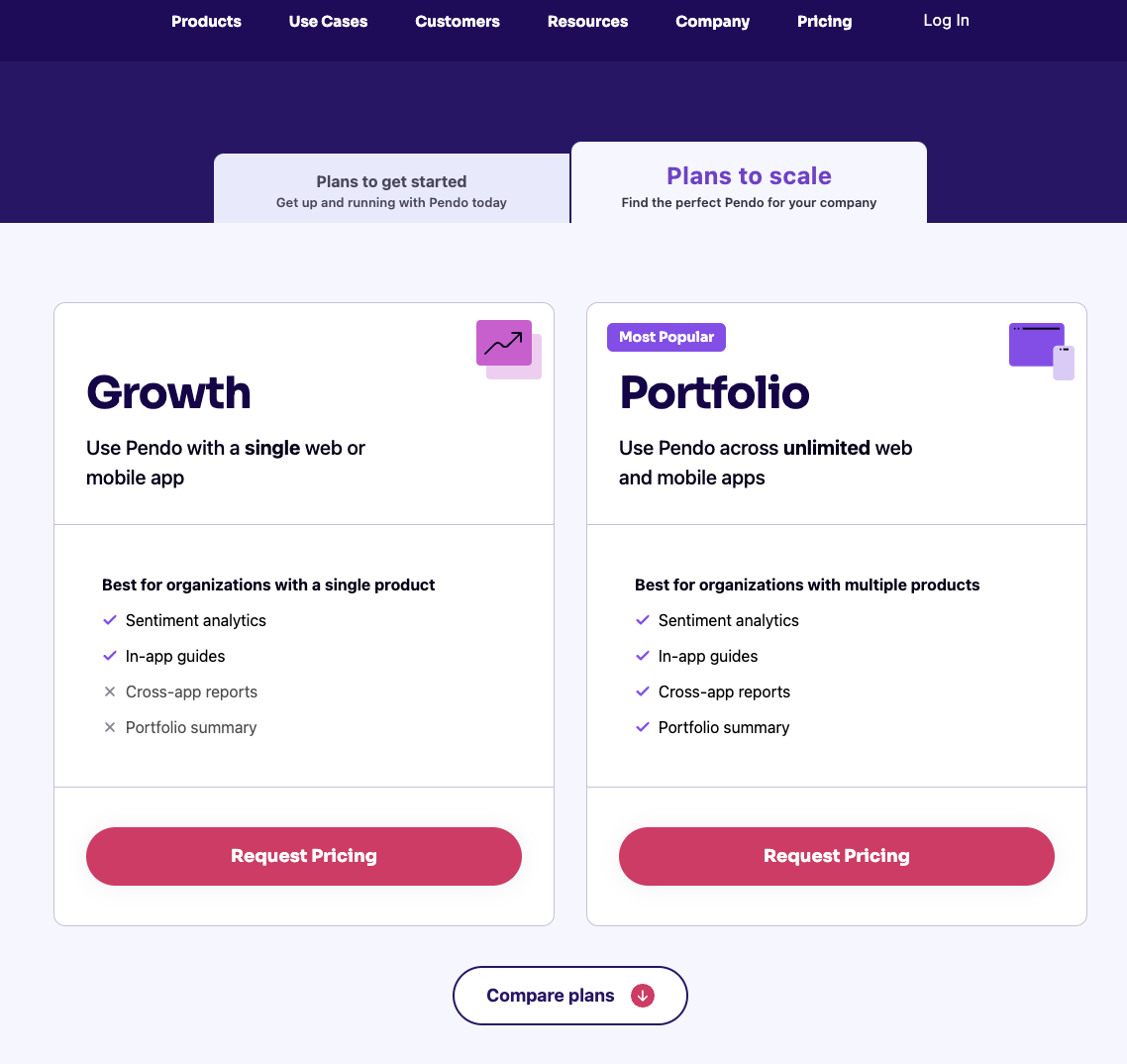
3 Reasons why you might need a Pendo alternative
There are a few obvious instances where you’ll likely need an alternative solution to Pendo — such as these use cases:
- Over 500 MAUs: If your product has more than 500 MAUs then you’ll need to subscribe to a premium Pendo plan (which tends to be significantly more expensive than other competitors on the market).
- Real-Time Analytics Needs: Companies that operate in fast-paced work sprints will likely opt for product adoption solutions with real-time analytics since Pendo’s one-hour data lag can data-driven decision-making difficult.
- Expensive Pricing Model: Pendo is more expensive than most solutions on the market and the subscription cost rises rapidly as your MAUs grow. Even if you’re on the Starter plan, you could be paying $35,000 annually once you reach 10,000 MAUs — which makes it harder to scale.
Userpilot – A better alternative for digital adoption
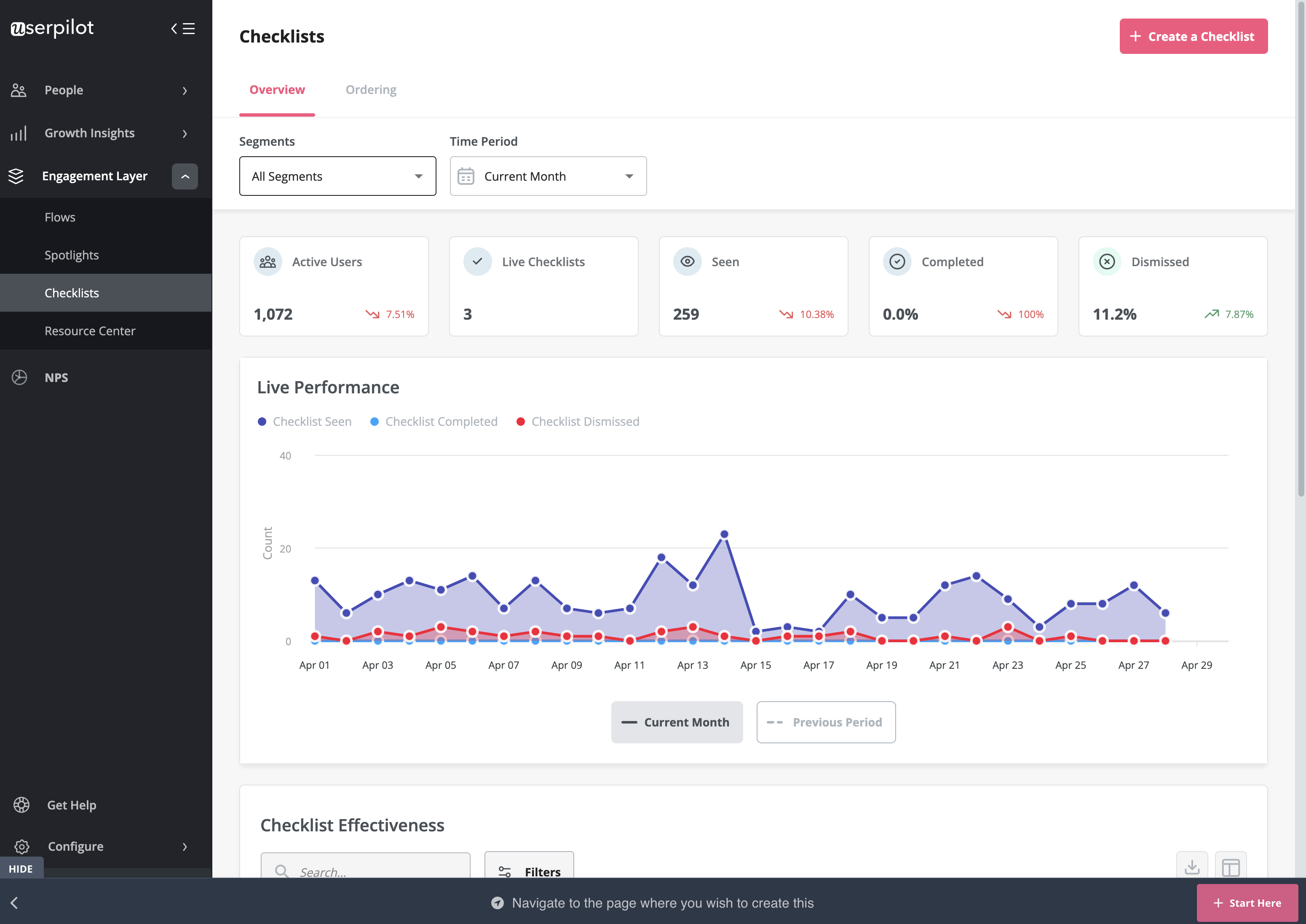 Feature adoption occurs when a user starts using a new/existing feature to solve their problems. Userpilot has built-in capabilities to track feature adoption analytics, identify the most popular features, and leverage UI patterns to help users discover features that they haven’t tried yet.
Feature adoption occurs when a user starts using a new/existing feature to solve their problems. Userpilot has built-in capabilities to track feature adoption analytics, identify the most popular features, and leverage UI patterns to help users discover features that they haven’t tried yet.
- No-code feature tagging: Userpilot’s click-to-track feature tagger lets you tag up to 15 features in the Starter plan and track its interactions without writing a single line of code. Users on the Growth or Enterprise plan can add an unlimited number of tags and use events to trigger in-app flows.

- Top events: The feature analytics dashboard will show you the top 20 events in a specific time period so you can see which features are most popular. You can track interaction volume for individual features or create custom events to group multiple elements/features together.

- Feature promotion: Adding in-app messages in the form of tooltips, hotspots, or banners can help users discover new features and learn how to use them. You’ll also be able to edit the size, placement, styling, and frequency settings for each UI pattern you attach to a feature.

- Feature checklists: Userpilot checklists are an effective way to nudge new users towards features and trigger actions upon task completion. You can also create checklists within your in-app resource center to increase feature discovery when users try to self-solve a problem.
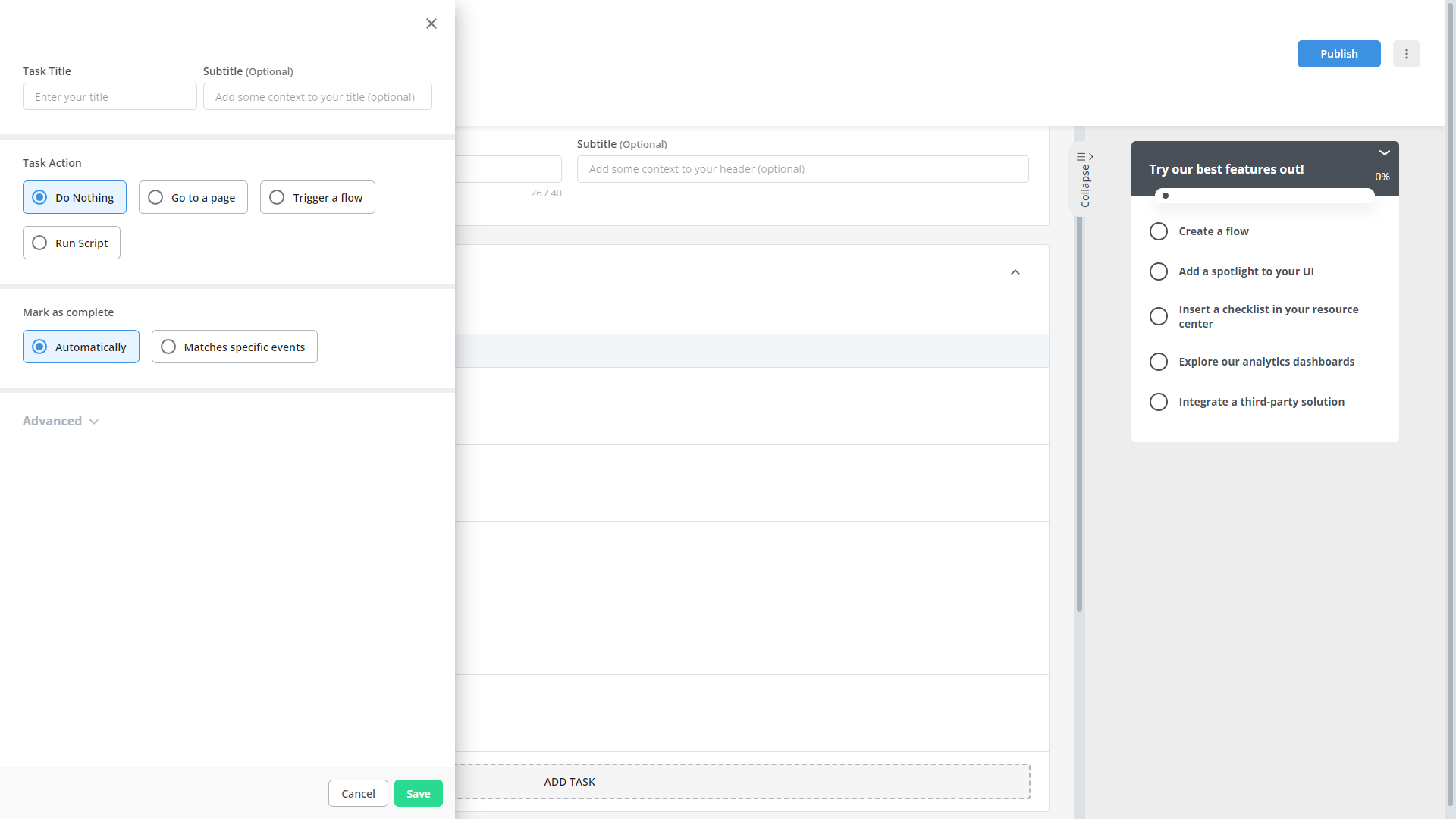
Userpilot’s tooltips
Tooltips are the most straightforward way to offer contextual information to users without interrupting their workflows. Userpilot lets you create tooltips as part of your in-app flows, attach standalone tooltips to individual features, and leverage the power of AI to streamline the process.
Here are the ways you can use Userpilot to create tooltips:
- Tooltip flows: Tooltips are one of the UI elements you can utilize when creating in-app flows. You’ll be able to edit the size, placement, and behavior of your tooltip as needed. You could also toggle the option to continue or dismiss the flow if a tooltip’s element can’t be located.
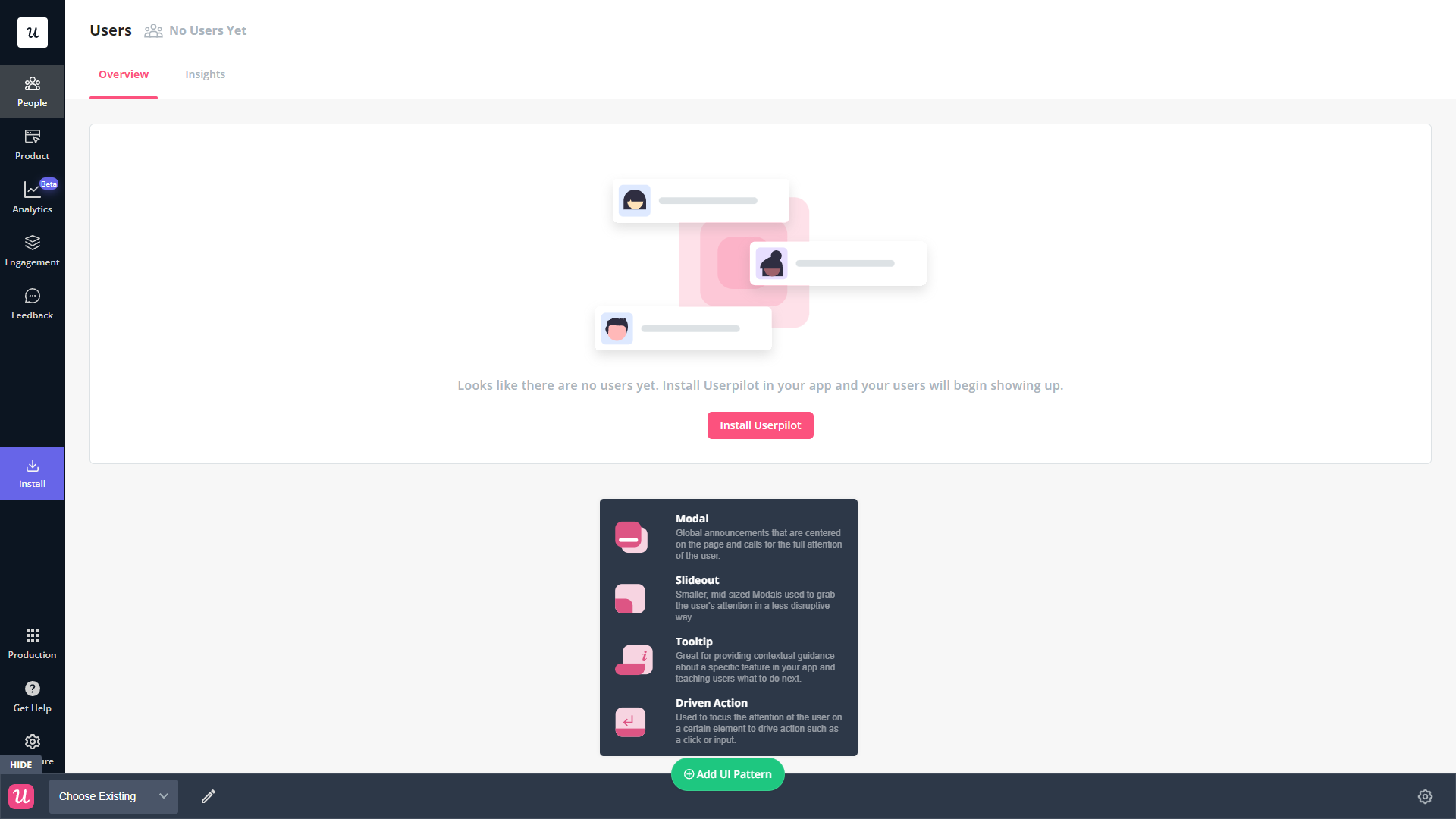
- Native tooltips: Userpilot spotlights let you create native tooltips that expand when users click on an element or hover over a feature. Since these tooltips are attached to the features rather than specific pages, they’ll show up anywhere that the element is present.
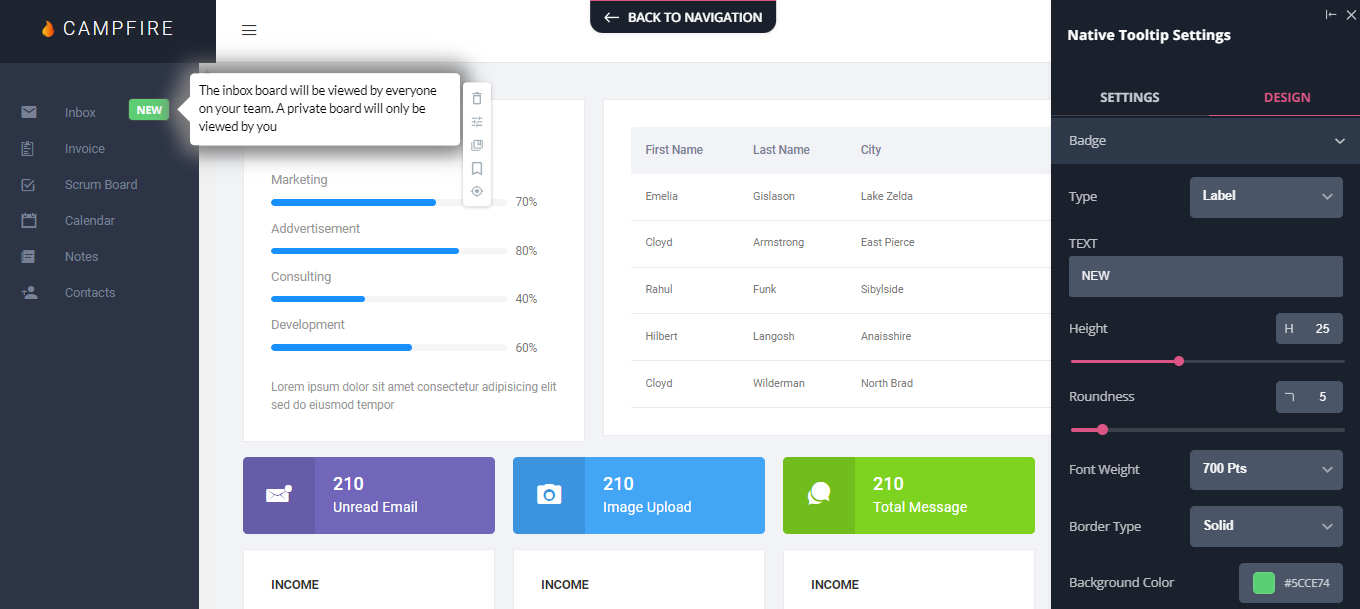
- AI assistance: Userpilot’s AI-powered capabilities help you create better tooltips in less time. You could use the writing assistant to create, shorten, or extend the content of tooltips and leverage automated localization to translate your flow’s tooltips to any of the 32 languages available.
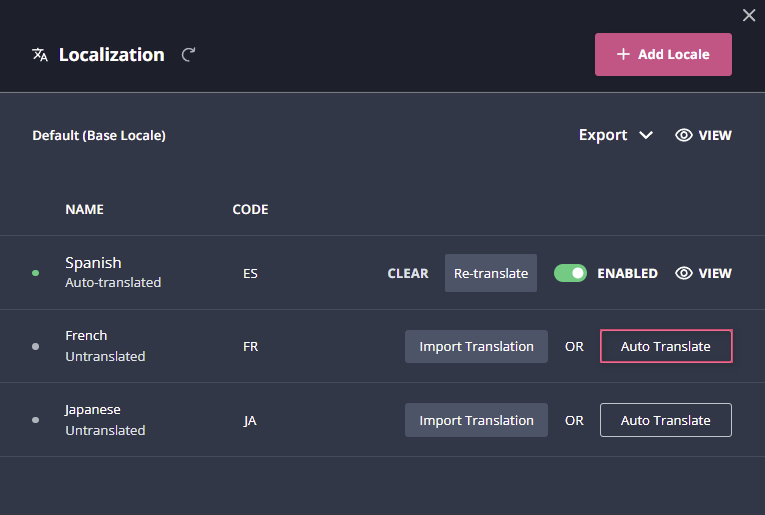
Userpilot’s feature tags
Tracking feature adoption is essential to identify under-utilized features and push users toward discovering them. Userpilot lets you tag features without writing any code, track adoption through engagement analytics, and visualize feature usage with heatmaps.
Here’s how you can use Userpilot to conduct feature audits and drive feature adoption:
- No-code tagging: Userpilot’s no-code feature tagger lets you add tags through the Chrome extension’s visual builder. You’ll also be able to select whether the tag should track clicks, hovers, or text inputs from users to get contextual data that reflects actual feature usage.
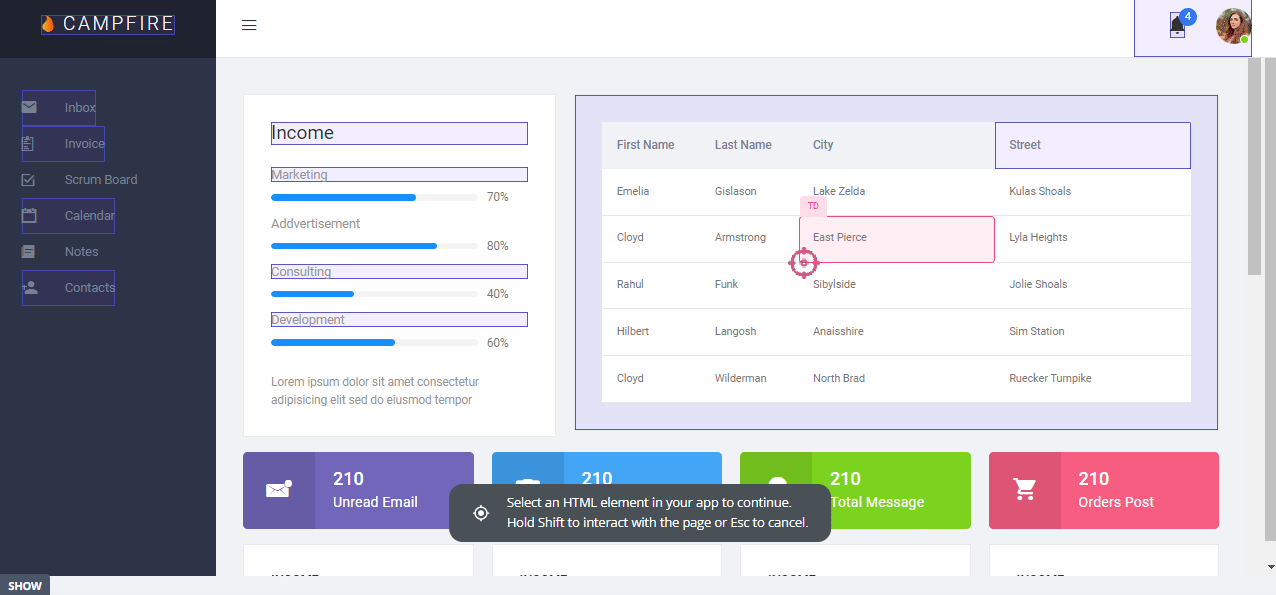
- Feature tags: The advanced feature analytics of Userpilot lets you track feature performance trends, see the top 20 features across your user base, and see granular data for individual features. You’ll also be able to filter your data by segment, company, or time period.
- Usage heatmaps: Userpilot heatmaps show you the features/elements with the most interactions. Heatmaps can be generated on the Features & Events dashboard by clicking on a tagged feature, editing it in the builder, and then clicking the heatmap icon on the bottom toolbar.
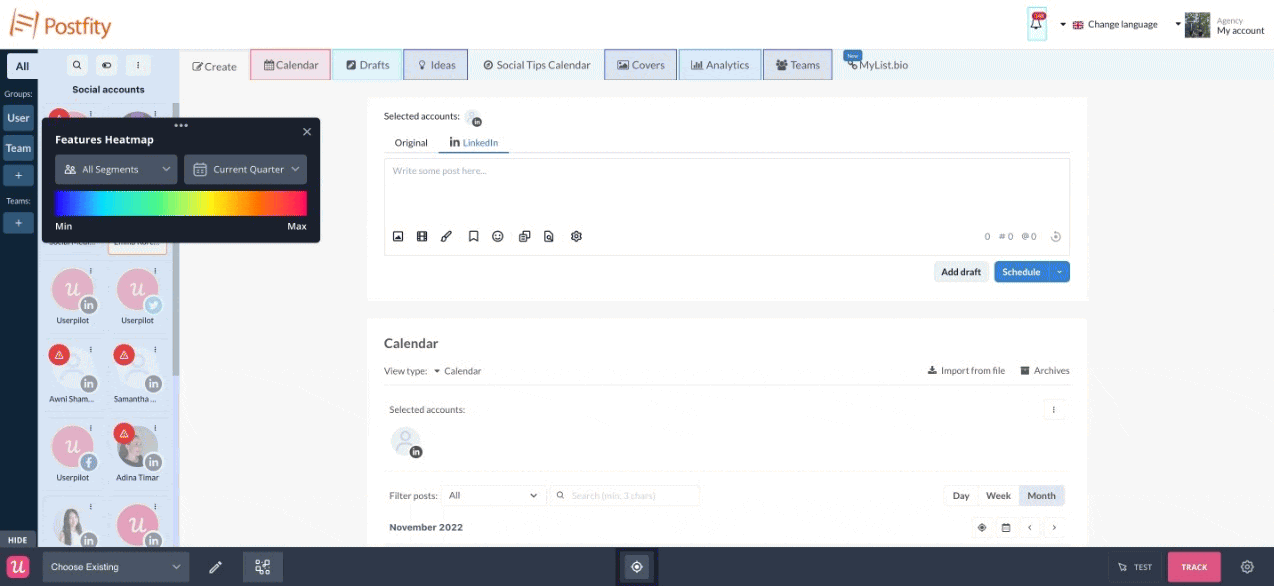
Userpilot’s interactive walkthroughs
Interactive walkthroughs are better than linear product tours because they let new users learn by doing instead of dumping a ton of information on them all at once. Userpilot’s no-code features let you build advanced interactive walkthroughs and create personalized flows for each segment.
Here are the Userpilot features you can use to create interactive walkthroughs:
- No-code builder: Installing the Userpilot Chrome extension makes it possible to build interactive walkthroughs with zero coding needed. You’ll be able to use every UI pattern — such as modals, slideouts, tooltips, and driven actions — regardless of which plan you’re on.
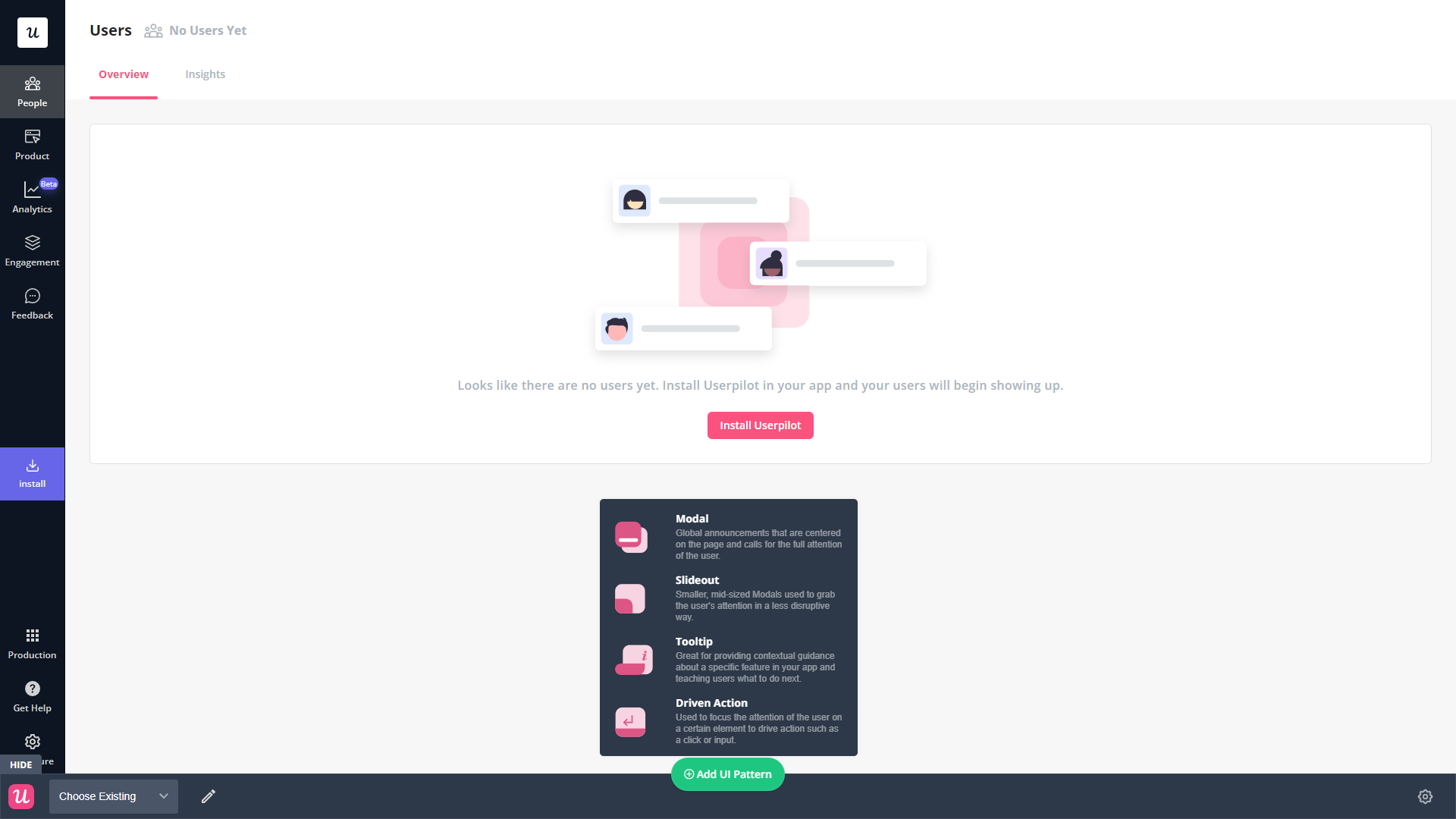
- Welcome surveys: Userpilot lets you create welcome screens that survey users on what their primary use cases, roles, needs, etc., are. You can create different walkthroughs depending on their responses to ensure that there’s a personalized experience for all.
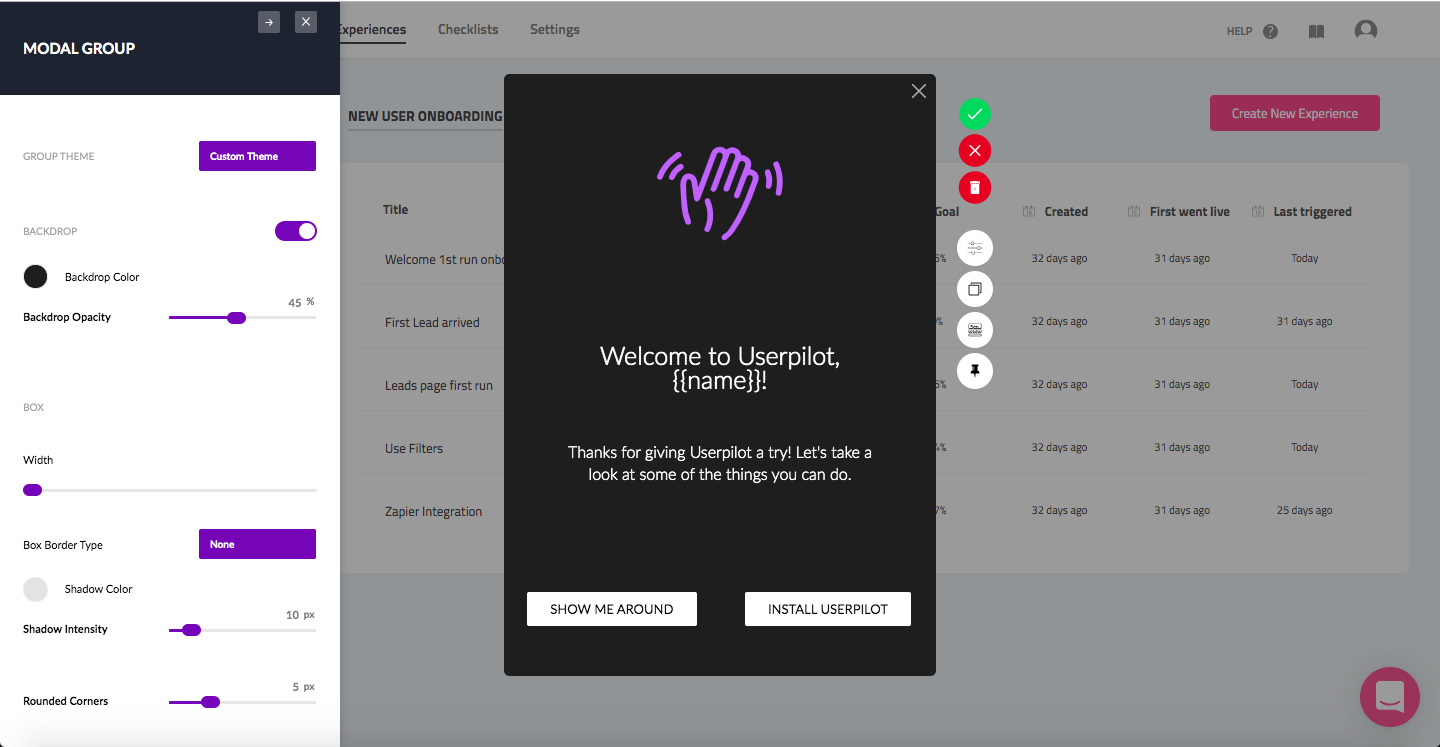
- Audience settings: The audience settings on Userpilot flows help you trigger or hide walkthroughs from specific users and segments. This makes it possible to create interactive walkthroughs that target a particular segment or trigger a flow when certain conditions are met.
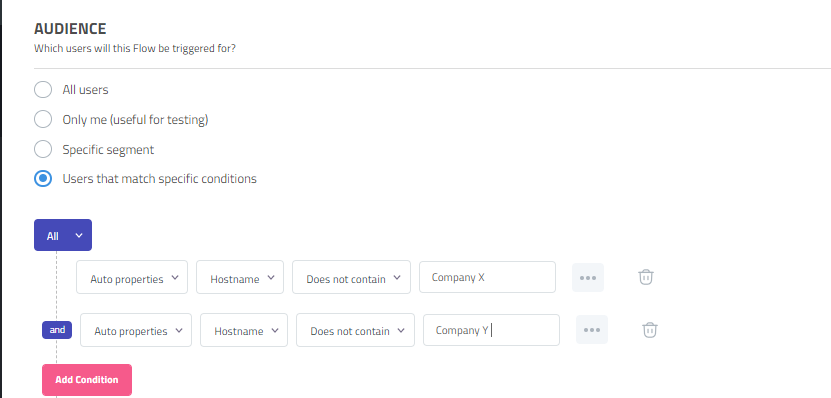
Userpilot’s in-app announcements
Userpilot offers multiple options for broadcasting your announcements to users, such as modals and slideouts as part of a flow or standalone banners for less urgent in-app messages.
Here are the Userpilot UI patterns you can use for your in-app announcements:
- Modals: Userpilot has modal templates for specific use cases such as announcements, but you can also create a new design from scratch. You’ll be able to enhance your modals with emojis, images, and videos to make announcements as engaging as possible for your users.

- Banners: This UI pattern (which you can create with Userpilot spotlights) helps you announce new features, updates, or downtime without taking up the entire screen. You can also add blocks to your banners to insert emojis, media, input forms, or custom JavaScript functions.
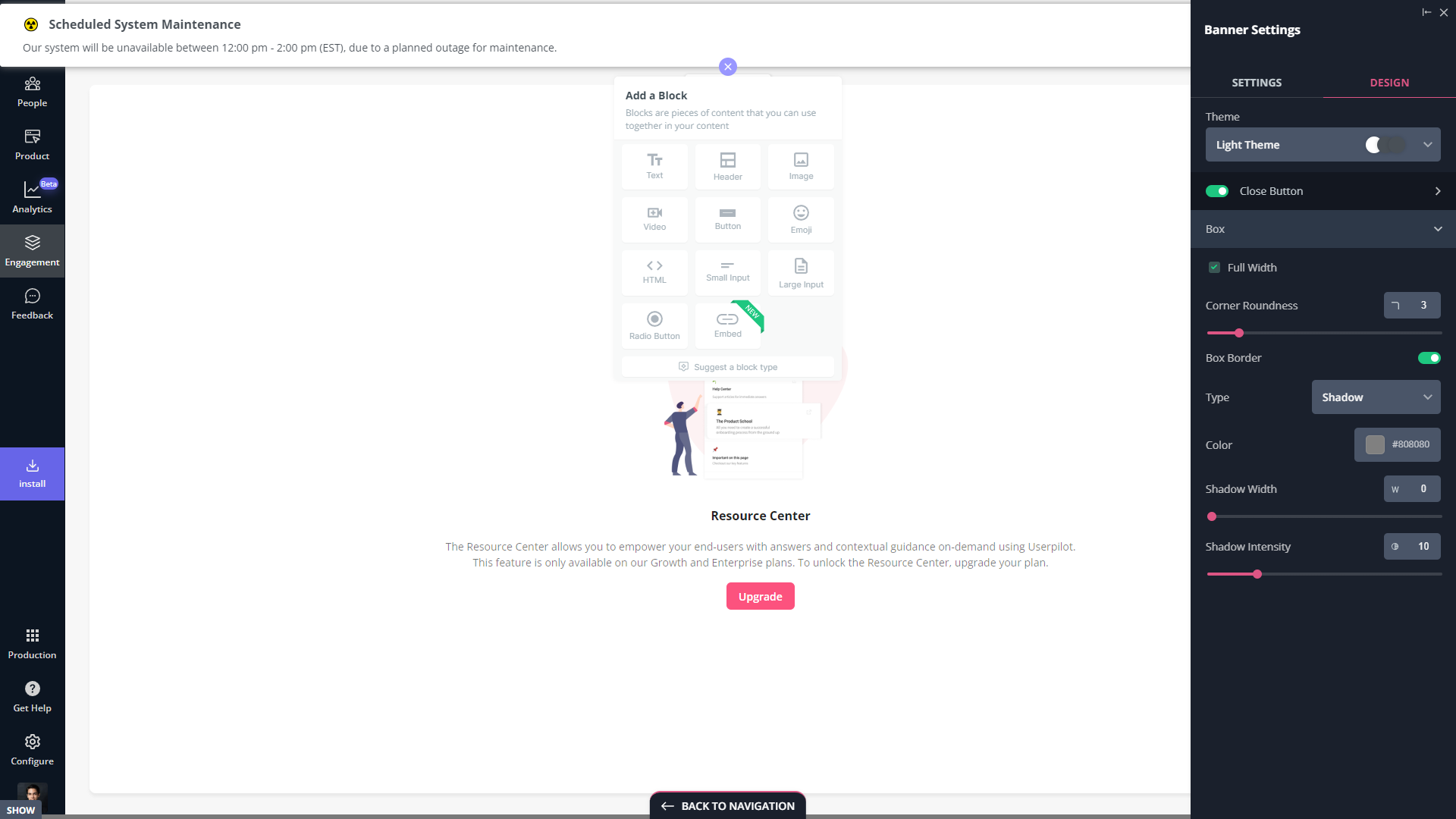
- Slideouts: If you want your announcements to be less intrusive than modals but more obvious than banners, then you can add slideouts to your flows. Userpilot lets you add progressive slideouts, two-button slideouts, and slideouts that trigger a full-on welcome tour.
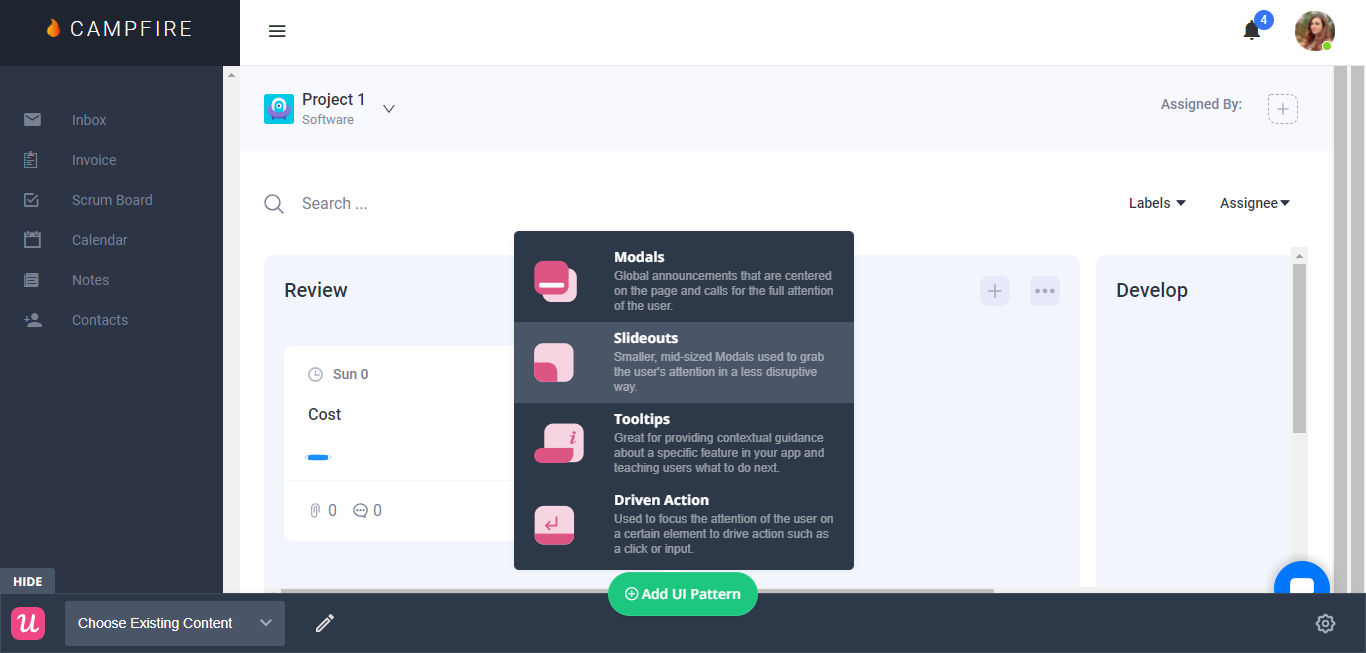
What are the pros and cons of Userpilot?
Userpilot pros
As a full-suite digital adoption platform, Userpilot has all the features you need to onboard users, track analytics, and gather feedback from customers without writing a single line of code. Here are a few pros of using Userpilot as your product growth solution:
- No-code builder: Userpilot’s Chrome extension lets you build flows, add UI elements, and tag features without writing a single line of code.
- UI patterns: There are plenty of UI patterns to choose from when using Userpilot, such as hotspots, tooltips, banners, slideouts, modals, and more!
- Startup-friendly: Userpilot’s entry-level plan gives you access to all available UI patterns so you can hit the ground running.
- Walkthroughs and flows: Build engaging interactive walkthroughs and personalized onboarding flows that target specific segments of your user base.
- Self-service support: Build an in-app resource center to help users solve problems, customize its appearance to align it with your brand, and insert various types of content (videos, flows, or chatbots) to keep your customers satisfied.
- A/B testing: Userpilot’s built-in A/B testing capabilities will help you split-test flows, iterate on the best-performing variants, and continually optimize based on user behavior.
- Feedback collection: Userpilot has built-in NPS surveys with its own unified analytics dashboard and response tagging to help you retarget users. There are other survey types to choose from and you can even create your own custom survey.
- Survey templates: There are 14 survey templates to choose from so you can gather feedback on specific features or run customer satisfaction benchmarking surveys like CSAT and CES.
- Advanced analytics: Userpilot lets you analyze product usage data, monitor engagement on all in-app flows, and use the data to create user segments that are based on behaviors instead of demographics.
- Event tracking: Userpilot’s no-code event tracking lets you tag UI interactions (hovers, clicks, or form fills) and group them into a custom event that reflects feature usage.
- Third-party integrations: Userpilot has built-in integrations with tools like Amplitude, Mixpanel, Kissmetrics, Segment, Heap, HubSpot, Intercom, Google Analytics, and Google Tag Manager so you can share data between all the solutions in your tech stack.
Userpilot’s cons
Of course, no tool is perfect and there are a few cons to consider before choosing Userpilot as your user onboarding or product growth solution:
- Employee onboarding: Currently, Userpilot only supports in-app customer onboarding.
- Mobile apps: Userpilot doesn’t have any mobile compatibility which could make it difficult for developers with cross-platform applications to create a consistent user experience for both versions of their product.
- Freemium plan: There’s no freemium Userpilot plan so those bootstrapping their startup and need sub-$100 solutions should consider more affordable onboarding platforms like UserGuiding or Product Fruits.
What do users say about Userpilot?
Most users laud Userpilot for its versatile feature set, ease of use, and responsive support team:
I recently had the pleasure of using Userpilot, and I must say it exceeded all my expectations. As a product manager, I’m always on the lookout for tools that can enhance user onboarding and improve overall user experience. Userpilot not only delivered on these fronts but also went above and beyond with its impressive new features, unparalleled ease of use, and truly exceptional customer support.
What truly sets Userpilot apart is its outstanding customer support. Throughout my journey with Userpilot, the support team has been responsive, knowledgeable, and genuinely dedicated to helping me succeed. Whenever I had a question or encountered an issue, their support team was always there to assist promptly, going above and beyond to ensure my concerns were addressed effectively.

Source: G2.
Of course, other users are also kind enough to share constructive criticism regarding specific features like event tracking filters:
“The filtration while analyzing specific events is a little confusing. Understanding of custom properties and data management configuration could have been more organised.”

Source: G2.
Userpilot’s pricing
Userpilot’s transparent pricing ranges from $249/month on the entry-level end to an Enterprise tier for larger companies.
Furthermore, Userpilot’s entry-level plan includes access to all UI patterns and should include everything that most mid-market SaaS businesses need to get started.

Userpilot has three paid plans to choose from:
- Starter: The entry-level Starter plan starts at $249/month and includes features like segmentation, product analytics, reporting, user engagement, user feedback, and customization.
- Growth: The Growth plan starts at $499/month and includes features like resource centers, advanced event-based triggers, unlimited feature tagging, AI-powered content localization, EU hosting options, and a dedicated customer success manager.
- Enterprise: The Enterprise plan uses custom pricing and includes all the features from Starter + Growth plus custom roles/permissions, access to premium integrations, priority support, custom contract, SLA, SAML SSO, activity logs, security audit and compliance (SOC 2/GDPR).
Conclusion
There you have it.
It should be easier now to make an informed decision whether Pendo is your go-to option for Digital adoption. Ultimately, the best choice will depend on your product and current needs.
If you’re looking for a better alternative to Pendo for Digital adoption, book a Userpilot demo today to experience firsthand how it can enhance your user experience and drive product growth!
![]()
Looking for a Better Alternative for Digital Adoption? Try Userpilot



